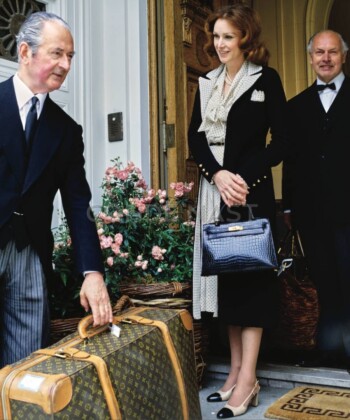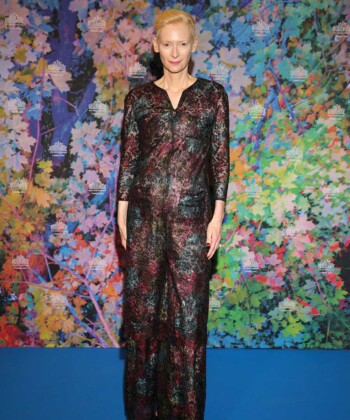For the next 15 years, Fauna lived with Jimmie Lee, who became an alcoholic prostitute. Fauna experienced the full discrimination of being in a black family, but, since she never did “darken,” she was also made to feel like an alien in her community. A saving grace for Fauna was Jimmie Lee’s live-in boyfriend, a shoeshine man who, Fauna says, “instilled kindness in me.” Another saving grace: staring at her birth certificate and dreaming of meeting her birth mother.

Fauna at age 8
As for Tamar, she remained artistic, precocious—and wounded. At 16, she married a black artist in Mexico, then left him after he beat her so badly she attempted suicide. In San Francisco, she married a second time. He was Stan Wilson, a black folksinger and activist. She became a people-connecting socialite in the interracial avant-garde, spending evenings at the Hungry i with Harry Belafonte, Maya Angelou, Lenny Bruce and Bruce’s stripper wife, Honey. She had a daughter with Wilson and named her Deborah. Though Tamar was, this now-adult daughter says, “very brave” in confronting the hate of being married to a black man in the early 1950s, her parenting almost helplessly followed the sick route etched by her sadistic father and her own enabling mother: She introduced Deborah to sex at age 10—the girl’s evenings with men paid the rent after Tamar’s divorce. And Tamar did not protect her from the family’s psychopath patriarch. When Deborah was 12, Hodel took the girl to a fancy lunch, slipped a drug in her drink “and I woke up hours later spread-eagled and undressed” in her half-clad grandfather’s presence.
While raising Deborah, Tamar became a big-sister figure to her beautiful 12-year-old neighbor, Michelle Gilliam. She was later to become the singer Michelle Phillips. “Tamar was so exotic, she was instantly my idol,” Phillips says today. But “she didn’t have a friend in the world.” And, even as a tween, Phillips knew there was something wrong with Tamar’s insisting, as if to rationalize her life, that it was a good thing to have sex with your father. Years later, when Michelle dated Jack Nicholson, she told him the tales she’d learned of Tamar, and they ended up in the screenplay for Chinatown. Of all people, John Huston, Hodel’s former best friend, played the powerful father who raped his daughter and forced her to have the baby.
Tamar moved with Deborah to Hawaii. Hearing the beautiful name of the sister she never expected to meet, Deborah legally changed her name to Fauna-Elizabeth. Tamar had three sons and was often stoned on psychedelics as a way to blunt her pain. Deborah-turned-Fauna-Elizabeth tended her little brothers.
In 1972, the family dynamic changed dramatically. The original Fauna had tracked Tamar down. “I almost died when I found out I wasn’t part black,” Fauna says. “Being black was so important to me.” Meeting the decadent sophisticate took Fauna aback. “I thought she would be like Doris Day!” But mother and daughter forged a bond, as did the half-sisters. They shared something with their mother: Fauna and Fauna-Elizabeth had had babies at 15. But they were determined to make something of their lives. Fauna wrote a memoir, One Day She’ll Darken. In 1991, it was made into a movie, Pretty Hattie’s Baby, starring and produced by Alfre Woodard. It was scrapped just after the rough cut was screened, leading to suspicions that Hodel, still alive, used what power he still had to get it shelved.
But eight years later, his influence was gone, and some of his darkest secrets emerged.

From the movie based on Fauna’s life
“Steve, the paramedics are here,” said the voice on the phone in the middle of the night. “They just pronounced your father dead.”
The fourth wife of Hodel had reached out to his favorite child, Steve, by then a retired police officer. Steve made his way to San Francisco and, while going through his father’s effects, found a curious thing: a photo of Lucie Arnaz as the Black Dahlia in a 1975 TV movie. Short’s horrific unsolved murder still held people in thrall, the subject of books and movies.
When he made a call to his half-sister Tamar, she said, “You know our father was a suspect in the Black Dahlia murder.” Horrified, Steve moved to L.A. and “followed the evidence” piece by piece. He compared his father’s letters to the handwriting in the anonymous ones written to newspapers (“That was my father’s handwriting, no doubt”) and interviewed dozens of people he knew from childhood. He found a receipt for his father’s purchase of cement bags the day after Short disappeared; identical empty bags were found near the corpse.
Steve Hodel published a book, Black Dahlia Avenger, making the case that his father was the killer. It was a best seller, but he still didn’t have the whispered-about secret-evidence file containing the bugging of the Franklin house.
A chance meeting changed everything. In 2002, Fauna Hodel introduced herself to an elderly man at her L.A. gallery who said, “Hodel? That’s an unusual name. I bugged a home on Franklin Avenue of a Dr. George Hodel. Murder case of Elizabeth Short.” He was retired cop Walter Morgan, and his confirmation of the tapes’ existence gave the search new life. In 2003, L.A. Times reporter Steve Lopez located the transcripts of the tapes, which had been hidden by the case’s 1950 DA investigator. Steve Hodel wrote three follow-up books, all with new evidence. The latest one was published in 2014.
The results of Steve Hodel’s investigation have been deemed conclusive by four LAPD officials. While the public position of the LAPD is that Short’s murder is unsolved, a former head of detectives, James McMurray, has said, “Go ahead and clear the Black Dahlia case.”
For Tamar and her children, closure hasn’t been as clear cut, but in the last few years, Fauna-Elizabeth Simon says triumphantly, “We broke the chain.” Tamar is finally able to understand the cruelty done to her at every level. At the end of her life, she has four grandchildren, all emotionally healthy and enjoying careers. “I love and forgive my mother,” says Fauna-Elizabeth, the daughter she raised. The other Fauna, the one given away, says, “Tamar is the most fascinating woman I know—and the most troubled—but did she want to save the world? Yes, she did.” By shattering the Hodel curse, her daughters helped save her.








































